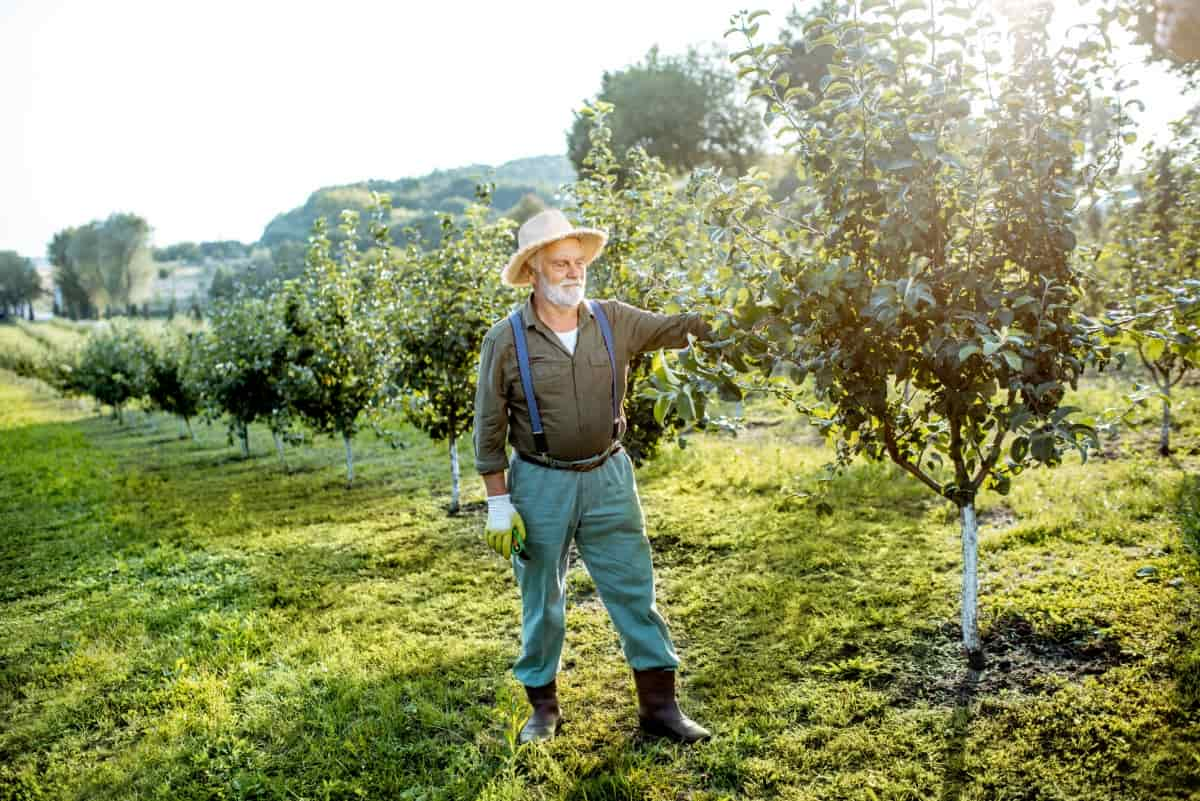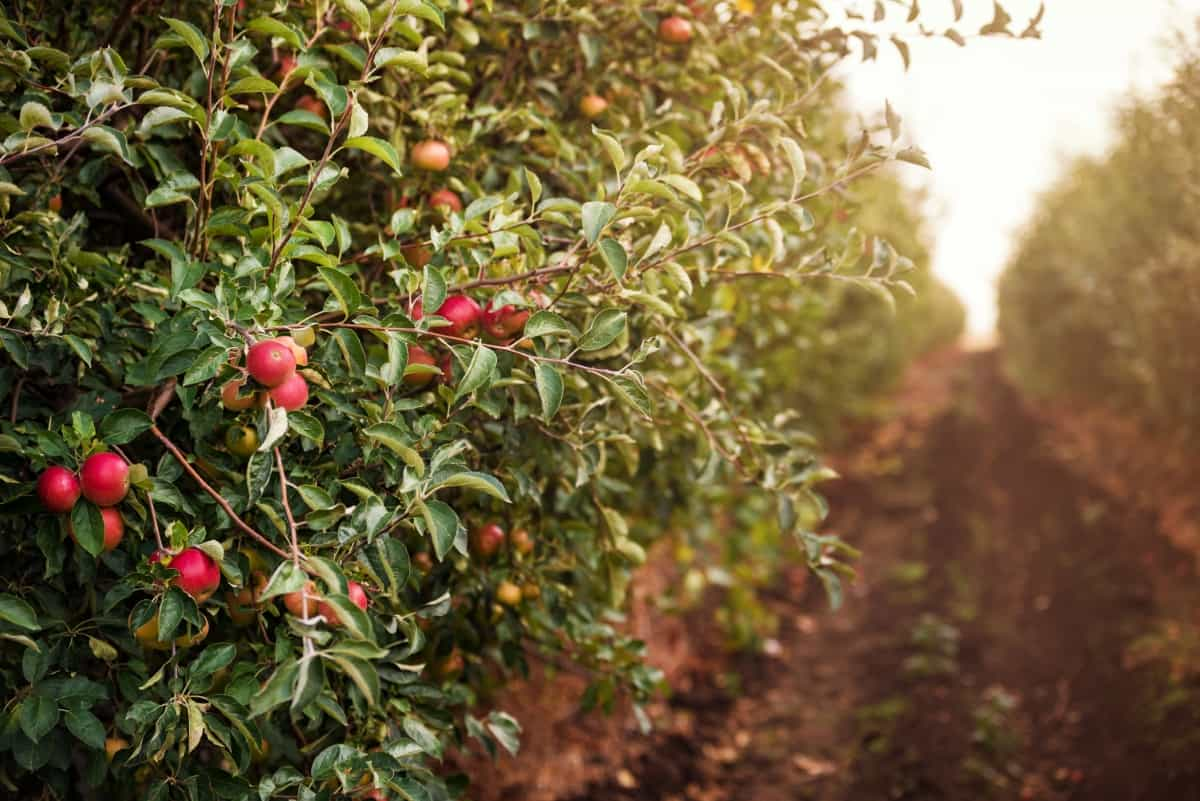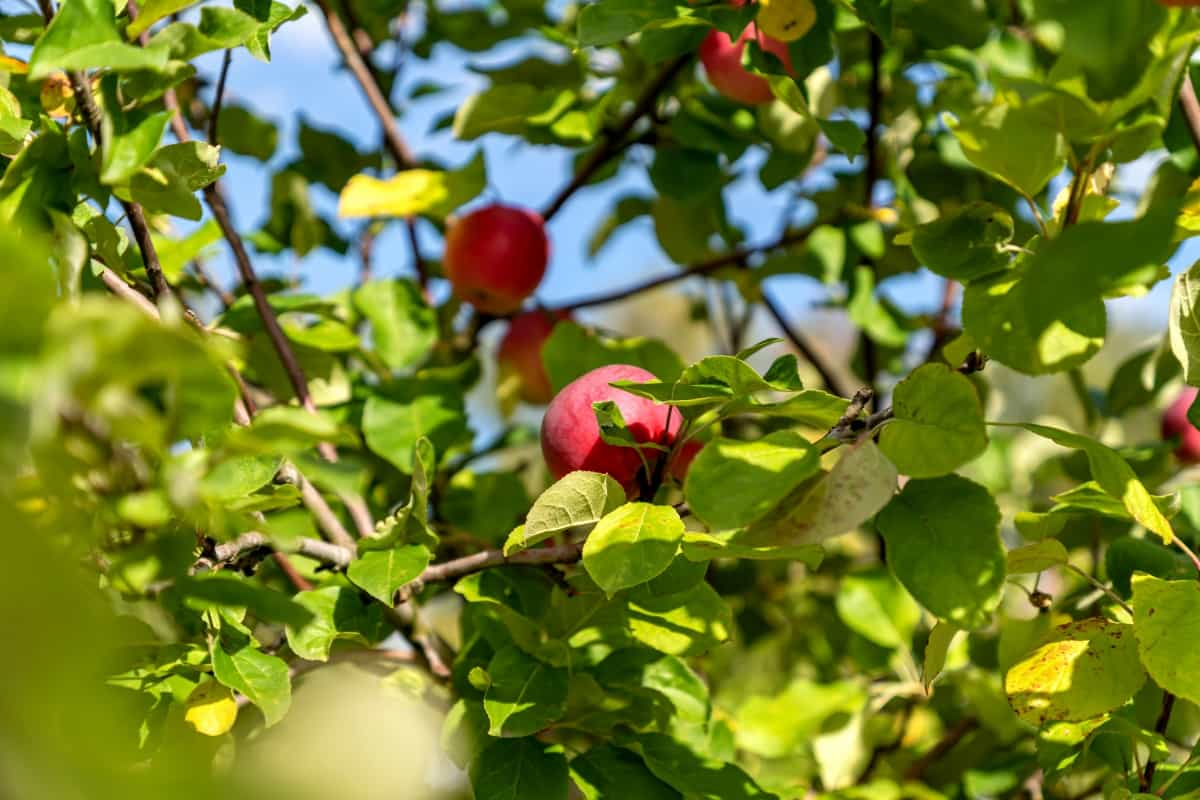The apple plant is popular with gardeners who want to bring life and color to their outdoor spaces. Unfortunately, even the hardiest plants can succumb to diseases and pests that can cause the plant to die. Understanding the common causes of dying apple plants and how to fix them will help save your apple trees.

9 Causes of Dying Apple Tree
Why is My Apple Tree Dying in Summer Heat and How to Save It?
Summer heat can be a major problem for apple trees, as it can cause them to drop their apples and die prematurely. To save your apple tree from the summer heat, there are steps you can take.
- During hot summer months, apple trees need extra water to survive, especially if they are newly planted. It would be best to water your apple tree about once a week. Mulching around the tree’s base can also help retain moisture.
- Protect your apple tree from the summer heat. Placing a shade cloth over the tree will reduce the heat it receives and help it survive the hot temperatures. You can also use a homemade canopy or a tarp to provide some shade for your apple tree.
- Fertilizing your tree regularly during the growing season can help it stay healthy and survive the summer heat.
Preventing Apple Tree Death from Fungal Infections: Effective Remedies and Prevention Tips
Apple trees are subject to a variety of fungal infections. These infections can be fatal if not managed properly. Fortunately, a few effective remedies and prevention tips can help keep your apple trees healthy and thriving. Inspect your apple trees regularly for signs of disease. Signs of a fungal infection include brown patches on the leaves, wilting, and premature leaf drop. Once a fungal infection has been identified, you should immediately prevent further damage.
Pruning infected branches and removing fallen leaves from the tree’s base can help reduce the spread of the infection. Mulching around the tree’s base can also help prevent spores from spreading through splashing water. Select disease-resistant varieties of apple trees. These varieties are bred to have a higher tolerance to fungal infections. Avoid overcrowding of apple trees. This can limit air circulation and promote the spread of disease.
Identifying Nutrient Deficiencies in Apple Trees and Remedies to Revive Them
Apple trees can suffer from nutrient deficiencies which can cause a decline in their production and health. You should identify and address these deficiencies to maintain apple trees’ health. To thrive, Apple trees need nitrogen, phosphorus, Potassium, sulfur, calcium, and magnesium. If any of these elements are absent, symptoms of deficiency will appear.
- Adding compost or animal manure to the soil can help increase nitrogen levels for nitrogen deficiency.
- For phosphorus deficiency, apply a phosphate fertilizer such as rock phosphate or bone meal.
- For potassium deficiency, apply a potassium-rich fertilizer such as potassium sulfate or potassium chloride.
- To treat iron deficiency, apply an iron-rich fertilizer such as iron sulfate or chelated iron.
- To treat magnesium deficiency, apply a magnesium-rich fertilizer such as Epsom salts or magnesium sulfate.
How to Protect Apple Trees from Pests and Diseases to Prevent Decline and Death
Monitor your apple trees for signs of pests or diseases. Look for any unusual discolorations on the leaves, wilting, or the presence of insects or other pests. Below are the steps to prevent pest and disease infestations in apple trees.
- Choose disease-resistant apple tree varieties. Some apple trees are more resistant to certain pests and diseases than others.
- Pruning will open up the tree’s canopy and allow for better air circulation, making spotting any signs of problems easier.
- Apply pesticides or fungicides to your apple trees if necessary. Follow the usage instructions and only apply them when needed.
- Planting in the spring will give the tree the best chance to establish itself before possible pests or diseases become problematic.
- Use natural predators to help control pest populations. Introducing natural predators such as ladybugs and other beneficial insects can help keep pest populations in check.
Overwatering Issues in Apple Trees: Signs, Symptoms, and Steps to Rescue a Dying Tree
The signs and symptoms of overwatering can be quite difficult to identify, and it is important to act quickly to rescue a dying tree. One of the signs of overwatering in an apple tree is wilting leaves. The other overwatering signs include yellowing leaves, slow growth, and fungal diseases. Roots can become saturated and unable to absorb oxygen from the soil, which can also be a sign of overwatering.
In case you missed it: 9 Causes of Dying Guava Tree and How to Fix It?

Some steps can be taken to rescue a tree suffering from overwatering. Reducing the frequency and amount of water given to the tree is essential. If the soil is very wet, it should dry out before watering again. Adding soil amendments like peat moss or compost can help improve the soil’s ability to absorb and retain water. Pruning the tree can also help reduce stress on the roots and encourage new growth. Finally, applying a fungicide to the tree can help control any fungal diseases that may have been caused by overwatering.
Underwatering Issues in Apple Trees: Signs, Symptoms, and Steps to Rescue a Dying Tree
To ensure your apple tree is healthy, it’s important to know the signs of underwatering and the steps to rescue a dying tree. The most common symptoms are wilting or yellowing leaves, dry, cracked, or splitting bark, and a lack of new growth. The tree may appear stunted, and the leaves may become discolored or drop prematurely. The tree may also struggle to produce fruit. If you suspect that your apple tree is suffering from underwatering, there are a few steps you can take to rescue it.
- Water your tree immediately and deeply, ensuring the root system is saturated.
- Then, add mulch around the tree’s base to help retain moisture. You can also provide the tree with a slow-release fertilizer to help it recover.
- Be sure to water your tree regularly, at least once a week, and monitor it for signs of distress.
Apple Tree Winter Damage/dying: Protecting Trees from Frost and Cold Temperatures
Winter weather can be harsh on apple trees, leading to frost and cold weather damage or even death. To protect apple trees from frost and cold temperatures, understand how the cold affects trees and take certain preventative measures.
- Ensure the tree should be planted in a location with good drainage and airflow. Also, the tree should be planted in a sheltered area less exposed to the wind.
- Make sure that the tree is well-watered before winter sets in.
- Once winter arrives, protecting the tree from frost damage is important. Wrapping the tree trunk with burlap or other protective material can be done.
- Protect the tree from extreme cold. Wrapping the tree in plastic or fabric is recommended to keep the cold temperatures out.
- Pruning should be performed in late fall before the coldest weather arrives. Prune dead or dying branches and to open the tree up so it can receive more sunlight.
Improper Pruning May Cause Apple Tree Death: Pruning Methods for Healthy Growth
Improper pruning can cause significant damage and even lead to the tree’s death. Therefore, understand the proper techniques for pruning an apple tree to ensure its health and growth. When pruning apple trees, remember the three Ds: dead, damaged, and diseased. Dead branches should be removed immediately. Damaged branches should be removed with clean cuts, and diseased branches should be completely removed.
Pruning can be performed in late winter or early spring. During this time, apple trees enter their dormant period, the best time to prune. Pruners should be sharp and clean. If pruners are dull or dirty, they can damage the bark and increase the chance of infection. It is also important not to over-prune. Removing too much of branches can cause stress and weaken the tree. So please do not do it.
Reviving a Stressed Apple Tree: Rehabilitation Methods for Overall Recovery
Stressed apple trees can be revived with certain rehabilitation methods that help the tree to regain its overall health and productivity. Before attempting these methods, however, it is important to identify the cause of the stress. Common causes of stress in apple trees include drought, nutrient deficiencies, excessive pruning, and disease.
- If the apple tree lacks water, it should be watered deeply and regularly to help it recover.
- For apple trees deficient in nutrients, soil amendments such as compost or organic fertilizers can be added to help them regain health.
- In cases of excessive pruning, the tree should be allowed to regrow without any further pruning. Additionally, providing shade in the summer can help protect it from the heat, and mulching can help retain moisture.
Combining the above measures can help revive a stressed apple tree and help it regain its overall health and productivity. With the right care and attention, apple trees can remain healthy for years.
In case you missed it: 9 Causes of Dying Fig Tree and How to Fix It?

Conclusion
In conclusion, several potential causes of apple plant death exist, including disease, pests, environmental conditions, cultural practices, and genetics. Knowing the cause is the initial step to fixing it, and orchard owners should take the necessary steps to ensure their plants are healthy and thriving.
- Ultimate Guide to Ossabaw Island Hog: Breeding, Raising, Diet, and Care
- Ultimate Guide to Juliana Pig: Raising Facts, Size, Diet, Care, and Lifespan
- Raising Lleyn Sheep: Disadvantages, Price, Uses, Characteristics, and Care
- Ultimate Guide to Meishan Pig: Breed Facts, Breeding, Raising, and Care
- Ultimate Guide to Teacup Pigs: Raising, Diet, Lifespan, Cost, and Care
- Guide to Raising Poll Dorset Sheep: Facts, Profile, Characteristics, Uses, and Care
- Ultimate Guide to Bighorn Sheep: Characteristics, Diet, Lifespan, Breeding, and Lifecycle
- Ultimate Guide to Raising Katahdin Sheep: Farming Facts, Breed Profile, Uses, and Care
- Ultimate Guide to Raising Oreo Cows: Belted Galloways Farming Facts, Profile, Uses, and Care